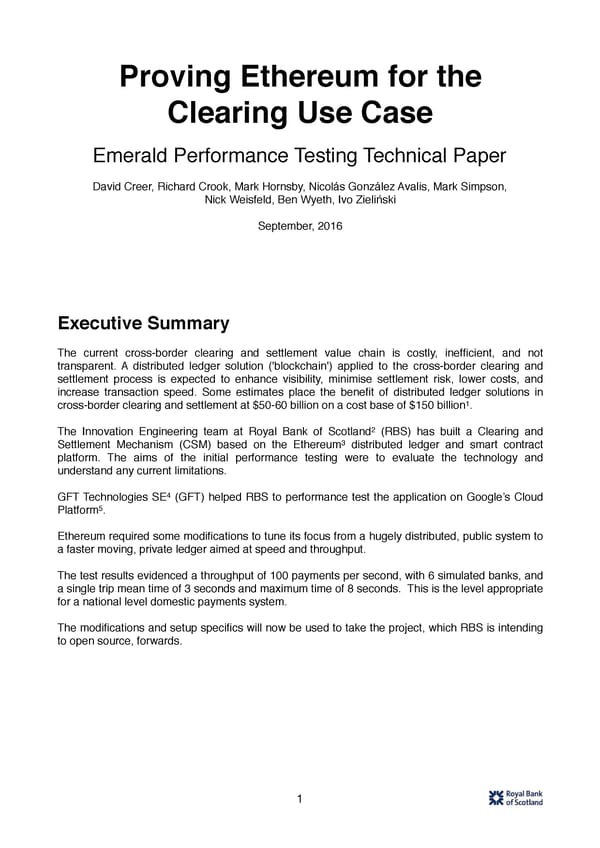Proving Ethereum for the Clearing Use Case Emerald Performance Testing Technical Paper David Creer, Richard Crook, Mark Hornsby, Nicolás González Avalis, Mark Simpson, Nick Weisfeld, Ben Wyeth, Ivo Zieliński September, 2016 Executive Summary The current cross-border clearing and settlement value chain is costly, inefficient, and not transparent. A distributed ledger solution ('blockchain') applied to the cross-border clearing and settlement process is expected to enhance visibility, minimise settlement risk, lower costs, and increase transaction speed. Some estimates place the benefit of distributed ledger solutions in cross-border clearing and settlement at $50-60 billion on a cost base of $150 billion1. The Innovation Engineering team at Royal Bank of Scotland2 (RBS) has built a Clearing and Settlement Mechanism (CSM) based on the Ethereum3 distributed ledger and smart contract platform. The aims of the initial performance testing were to evaluate the technology and understand any current limitations. GFT Technologies SE4 (GFT) helped RBS to performance test the application on Google’s Cloud Platform5. Ethereum required some modifications to tune its focus from a hugely distributed, public system to a faster moving, private ledger aimed at speed and throughput. The test results evidenced a throughput of 100 payments per second, with 6 simulated banks, and a single trip mean time of 3 seconds and maximum time of 8 seconds. This is the level appropriate for a national level domestic payments system. The modifications and setup specifics will now be used to take the project, which RBS is intending to open source, forwards. 1
 Proving Ethereum for the Clearing Use Case Page 1 Page 3
Proving Ethereum for the Clearing Use Case Page 1 Page 3